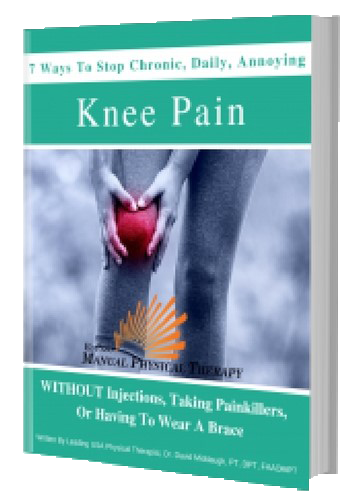TAP TO CALL (915) 503-1314

3 BEST TIPS TO STOP LIMPING AFTER KNEE REPLACEMENT SURGERY
I’ve got the three best tips to stop limping after having a knee replacement surgery. The first tip is to use a cane or a walker, even if you’ve already given up using the cane or the walker, you might need to come back to it from time to time, so that you can reduce the amount of limping that you’re doing, because limping is just going to negatively affect your current knee replacement that you just had done.
As well as any other surgeries, you had any other joints that are involved in your legs, it’s going to cause problems elsewhere. Simply getting a cane something like this, so that when you walk, you’re not limping over this way, you’re instead holding yourself up and they tell you that there’s a specific side you’re supposed to use a cane on and generally I tell people use it opposite of the side that you have pain on.
But if you find that you limp less holding it on the on the wrong side, the side that that hurts, that’s okay, you’re better off not limping than trying to follow the proper instructions. And if a cane isn’t enough support, if you feel wobbly like this, whenever you’re pushing through the cane, then you probably need something more substantial, like a walker like this when you’re walking, because if you can make sure that that limp goes away that your body’s not shifting over onto the leg that hurts, then you’re not going to be compensating in other parts of your body, and you’re going to be safer and healthier for the long term.
The second tip is to get more glute strength. If this is your leg right here, the glutes going to be at the back of the hip. And the reason why it’s so important is because the glutes control the knee position tremendously, because the glutes control the ball and socket joint of the hip, it can influence rotation at the knee, flexion, extension and even movements outwards and inward.
That’s called adduction, and abduction, all of these movements in 3D tremendously affect the mechanics of the knee joints. So if you don’t have good glute strength up here, there’s a possibility that your leg can move in inappropriate ways, which can contribute to limping. The glutes are also key at stabilizing everything between the lower back, the hip and the knee, and even below the knee into the ankle and foot.
So it’s super important to make sure you have adequate glute strength. And it’s typically not focused on enough right after having a knee replacement surgery, usually, the focus is on those quad muscles on the front of the thigh. And those tend to get strong first, and they tend to get over dominant and glutes tend to be left behind. The third tip is getting more strength in your foot muscles.
The foot muscles are important because if you have adequate strength there, then the arch of your foot is going to be properly supported. If strength declines, which typically happens after you’ve been off your feet more you have been bedridden, especially if you had surgery, and the nerves that are passing through the knee to go down into the leg and foot are affected that could affect your strength.
And so there’s a greater chance that your arch is going to collapse. And when that arch collapses, it causes this inward shift of the ankle which shifts this bone which creates bad forces at the knee. So if you’re consistently taking a step with a collapsed arch, then you’re going to affect the pressures and the mechanics of the knee joint.
And that’s going to contribute to a limp. So getting stronger toe curling muscles tends to help support the arch better down here in the foot. Now I’ve got two more bonus tips for you. One is don’t settle. I see so many people settle on just having a limp the rest of their life because they think I’m just going to have a limp because I’m this old now and I’ve had a knee replacement and maybe had the other knee replaced as well.
And they just concede and say I’m going to have to just live with a limp the rest of my life. The reality is you’re likely just two or three months away from gaining enough strength and being able to use that strength properly during your walking so that you’re not limping anymore, which is going to preserve the rest of your body much better.
If you commit the time and effort to gain strength in the right areas and use things like a walker or a cane to assist you from running into limping, then you’re going to be much better off so that you can enjoy the rest of your life without worrying about your knee replacement failing or some other problem developing. And the second bonus tip is to just ask yourself, why am I limping? I mean really think about it.
Is it pain or is it weakness? Maybe you don’t have any pain? Is it maybe you have pain because there’s weakness? Is it maybe just a habit that you’ve developed over time because you were limping or after surgery and even though you have strength and you don’t have pain, you just haven’t flipped the switch in your head to turn off your limp.
That’s a possibility as well. More often than not, though there’s some weaknesses involved and there’s usually root muscle imbalances deep at the problem that have not been resolved, even since getting a knee replacement surgery because surgery does not fix muscle imbalances. And with these muscle imbalances often come weakness in the glutes and weakness in the foot muscles and over dominance in other muscles.
These are also called compensations, that end up causing bad forces to go to the joints and cause some pain and cause bad mechanics at the specific joints but also in the overall movement, which is why you limp. So just think about these problems and figure out what is the root source of your limp. Now if you want to learn more about muscle imbalances, and fixing problems related to a knee replacement, I’ve got lots of videos here on this YouTube channel.
There’s a playlist of them, in fact, called the Knee Replacement Help playlist, and you can find it linked in the description below. And I’ve also got an online program that’s comprehensive, it takes you through all the steps, all the treatment possibilities that you can do to help problems from a knee replacement.
It’s called the Failed Knee Replacement Recovery Program. And you can find a link to that down in the description below. Hope this video was helpful for you. If it was please give us a thumbs up. Please share this with somebody you think needs to see this. And please hit the subscribe button so you don’t miss out on any of the helpful videos that we post each and every week. I would turn on your notification bell as well. Thanks so much and I’ll see you in the next video. Bye bye!
Would You Like To Talk With A Specialist?
Appointments and Questions Call: (915)503-1314
EL PASO MANUAL PHYSICAL THERAPY
2601 E. Yandell Drive, Suite 232
El Paso, Texas 79903
© 2023 El Paso Manual Physical Therapy, PLLC, All Rights Reserved
